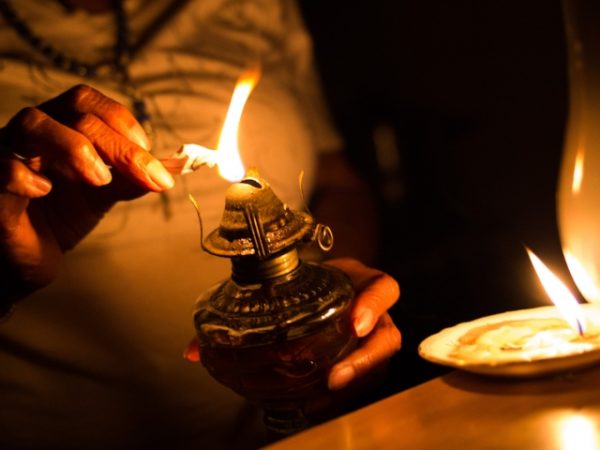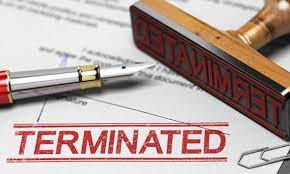Kashmir Boils Over 20% Winter Power Surcharge: Relief Hope Crushed by New Burden
By: Javid Amin | 21 November 2025
As winter settles over the Himalayas, residents of the union territory of Jammu & Kashmir brace for more than just freezing nights and snow-laden roads: they now face a 20 percent surcharge on electricity consumption during peak morning and evening hours. The move, proposed by the local power distributor, has stirred wide-spread anger among households, businesses and political leaders alike.
Instead of the much-anticipated free or subsidised electricity often promised during campaigning, Kashmiri consumers are confronted with an additional financial burden at the very time they need more power for heating, lighting and daily survival. The cry from the Valley is loud: this is not relief — it’s punishment.
In this article, we unpack the surcharge proposal, examine the public and political reaction, explore the economic and symbolic stakes of energy justice in Kashmir, and reflect on what this means for power, trust and governance in a region already under strain.
The Proposal: What’s Being Thrown at the Consumer
A. The 20% Surcharge Explained
Kashmir Power Development Corporation Limited (KPDCL), the power distribution company in Jammu & Kashmir, has submitted a proposal to the Joint Electricity Regulatory Commission (JERC) seeking to impose a 20 per cent surcharge on electricity consumed during specified “peak hours.”
These designated hours are:
-
Morning slot: roughly 6 am to 9 am (some sources say 6-10am)
-
Evening slot: roughly 5pm/6pm to 9pm/10pm (some sources say 5-10pm)
According to local reporting, if approved, households, commercial and industrial consumers (except agriculture) will pay 20% more for units consumed during these hours.
B. KPDCL’s Rationale
The official justification:
-
To manage load balancing on the grid, particularly during peak demand in winter when heating and lighting needs spike.
-
To encourage users to shift consumption to off-peak hours, thereby easing strain on infrastructure.
In other words: consumption at traditionally high-demand times will cost more.
C. Current Status
The proposal is not yet implemented; it is pending review by JERC, including possible public hearings.
Public & Political Reaction: Outrage, Resistance, & a Sense of Betrayal
A. Residents and Civil Society Speak Out
The proposal has generated widespread anger across the Valley. Many consumers argue:
-
They already face frequent power cuts and poor reliability of supply—so imposing higher tariffs now is unfair.
-
Winter is a time when electricity is not luxury but necessity—heating, lighting, cooking all depend on reliable supply. When families must stay warm, asking them to pay more seems punitive. “In Kashmir, electricity is not a luxury, it is life support.”
-
The timing is especially sensitive: with harsh winters ahead, small households, middle class families and business units feel squeezed.
Business/trade groups also raised alarm:
-
The Kashmir Chamber of Commerce and Industry (KCCI) criticised the surcharge, calling it a “hidden tariff hike” and arguing that instead of addressing structural weaknesses (like high loss, ageing infrastructure), the cost is being shifted to consumers.
-
The Kashmir Trade Alliance (KTA) labelled the move “arbitrary” and “unjustified”, noting businesses are already under distress in Kashmir’s economically fragile environment.
B. Political Leaders and Parties Respond
Opposition voices and even government-allied leadership voiced strong criticism:
-
Tanvir Sadiq (MLA from the regional ruling party) called the proposal “unfair and ill-timed,” posted on X that people of J&K will not be burdened with such a measure.
-
Altaf Bukhari (Apni Party) described the surcharge as a “grave injustice” to people already facing winter hardship, with tourism & horticulture sectors hurting and now higher power costs looming.
-
Others raised pointed reminders of previous election promises: For example, one comment notes:
“Wasn’t someone loudly promising 200 units of free electricity not too long ago? … Turns out Kashmir didn’t get 200 free units … instead we’re getting 20% extra bill during the only hours when people are freezing & desperately need electricity.”
-
The local government (via NC-led voices) signalled opposition to the surcharge moving forward.
C. Sentiment & Symbolism
Beyond numbers, the backlash reflects something deeper: a sense of betrayal. Many in the Valley feel that their region, with its extensive hydropower potential and heavy reliance on electricity during winter months, should not be treated as a penalised load centre but rather as someone deserving of relief. The surcharge is seen as a symbolic affront.
Why It Matters: Economic, Social & Symbolic Stakes
A. Economic Strain on Households
In numerical terms, a 20% surcharge on units consumed during high-demand periods translates into a meaningful increase in bills. For households relying on electric heaters, immersion rods, lighting, cooking, and general winter needs, the morning and evening slots are exactly when usage is highest. Being asked to pay more for that usage hits hardest.
In a region where many incomes are seasonal (tourism, horticulture) and infrastructure is uneven, such added cost is not trivial. Businesses and commercial consumers also face higher operational costs when electricity peaks coincide with opening/closing hours and production shifts.
B. Energy Justice & Regional Equity
This is more than an electricity tariff issue—it touches on the question of regional equity:
-
Kashmir generates significant hydropower (though winter generation dips) yet feels deprived of the benefits (stable supply, subsidised rates) of that generation.
-
Introducing a surcharge on peak-hours directly when demand is highest in this region seems contrary to the idea of “regions generating power get preferential benefits”.
C. Systemic Weaknesses vs Consumption Punishment
Several civil society actors pointed out: Instead of first fixing structural problems (metering, transmission losses, supply interruptions), the power utility is penalising consumers. For example, KCCI cited SAIDI/SAIFI figures (interruption durations/frequency) in J&K much higher than the national average.
This brings to light a core governance question: Should consumers pay more because the system is weak, or should the system be fixed so consumption surcharges don’t become the default?
D. Trust, Governance & the Political Climate
In Jammu & Kashmir, governance is complicated by security, geography, winter hardships, and historic grievances. The surcharge adds another flashpoint of alienation: “Why are we being asked to pay more when all around us we still struggle with power cuts?” This may deepen mistrust between citizens and institutions.
When a government talks of development, normalcy, integration—but everyday life includes higher surcharges for basic electricity—the gap between rhetoric and lived experience becomes obvious.
What’s Next: Possible Scenarios and What to Watch
A. Regulatory Outcome
The JERC will hold hearings on the proposal, and it may approve, modify or reject the surcharge. Public feedback, political pressure and technical inputs will all matter. If it approves as is, the surcharge will likely be implemented in the next billing cycle.
However, given the backlash, there is also a real possibility of modifications — perhaps exemptions for vulnerable households, different tariff slabs, or a phased introduction.
B. Consumer Response & Mobilisation
Expect more public actions:
-
Trade and business bodies mobilising
-
Legal petitions challenging the surcharge
-
Social media campaigns and public protests
-
Political declarations ahead of winter and election seasons
C. Government Reaction
The local government and KPDCL may need to respond with:
-
Clarifications on why the surcharge is needed
-
Relief packages for vulnerable populations
-
Measures to improve supply reliability (so the surcharge doesn’t appear as compensation for poor service)
-
Communication efforts to explain off-peak consumption benefits
D. Long-Term Reforms
If the crisis deepens, longer-term policy reforms may be demanded:
-
Tariff rationalisation for winter and high-altitude regions
-
Special subsidised rates for cold regions or rural off-grid users
-
Structural strengthening of power generation, transmission & distribution in J&K
-
Transparent metrics on reliability and service quality
Bottom-Line: From Tariff Debate to A Larger Mirror of Governance
The 20% winter surcharge proposed by KPDCL might seem on the surface a technical tariff measure. But in Kashmir—where electricity is not just comfort but survival, where winters are harsh, where infrastructure is challenged, and where historical grievance remains—it has become a symbol.
A symbol of:
-
the gap between promise and reality
-
the fault lines between state and citizen
-
the question of who pays when systems strain
-
the broader demands for fairness, reliability and dignity
When ordinary families are told to pay more at the time when they need power the most, the trust deficit widens.
If the surcharge proceeds without adequate relief or offsetting reforms, it risks:
-
deepening alienation in an already sensitive region
-
adding a socioeconomic burden in winter months
-
marring the credibility of power/energy policy in the Valley
On the other hand, if the government responds with empathy, transparency and reform, this moment could become a pivot — from consumer frustration to institutional accountability. The choice lies ahead.
For Kashmiris, and for Jammu & Kashmir as a polity, the message is clear: energy access is not just about wires and tariffs—it is about dignity, fairness, trust.



